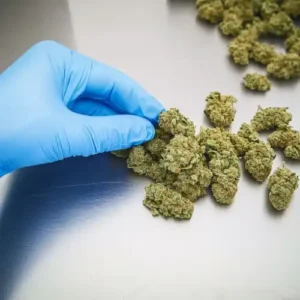In the UK, as in many other countries, it is illegal for an individual to drive a vehicle whilst impaired by drugs. In March 2015 a change in the drug driving law was brought in to make it easier for police to stop and prosecute drug drivers.
Recent data reveals an alarming trend in drug-driving fatalities, which have increased by 164 percent in the last decade. According to 2024 government figures, drug-driving now accounts for 8 percent of road deaths, with cannabis and cocaine being the most frequently detected substances. The analysis shows fatal accidents involving drugs rose from 47 in 2014 to 124 in 2023, with a concerning 38 percent increase between 2022-2023 alone.
Testing for drug driving isn’t as straightforward as it is for drink driving. For many years, police have relied upon breath tests to find out if a driver is over the alcohol limit. These devices are portable and very accurate, making road policing for drink drivers relatively straightforward.
However, when it comes to drugs, a simple breath test isn’t readily available to police. This means they must rely on other methods to test for drug usage, normally a saliva or blood test. This makes on-the-spot testing for drug driving very difficult to implement.
UK Drug Driving Laws
The UK drug driving law offers a zero tolerance policy against a total of 16 drugs. Eight of these are commonly used illegal drugs such as cannabis, cocaine and ecstasy. The remaining eight are prescription medications that some people also use for recreational purposes.
Roadside drug tests can detect cannabis or cocaine in a driver’s saliva. However, for other banned substances, a laboratory test is required. Drug test cut-off levels determine whether a result is positive or negative.
In May 2015, just two months after the introduction of the new laws, the Daily Mail reported that six out of ten motorists were failing the new roadside tests. The most commonly detected drug was cannabis, closely followed by cocaine.
Drivers aged 20-29 are most likely to test positive for illegal drugs, corresponding with higher drug use prevalence in this age group. Cannabis remains the most used drug in England and Wales, with 15.4 percent of people aged 16-24 reporting use. This demographic trend highlights the importance of effective roadside testing methods.
A Breath Test for Drugs
A device that can test for all drugs using breath remains a future goal. Ideally, police would be able to test for all 16 banned drugs with a simple drug breath test device that would give instant results, immediately indicating whether a driver was under the influence. However, the technology for such a device isn’t currently available.
What about a Cannabis Breath Test?
Even testing for cannabis, the most commonly abused drug, isn’t yet a widely usable reality. Many have tried to develop a cannabis drug breath test, but none of the competing systems have achieved widespread adoption.
Difficulties in Testing for Cannabis
All cannabis drug screens are designed to detect THC, the active component in the drug. To learn more about how cannabis affects your system, it’s important to understand that while cannabis use can show up in saliva for up to 24 hours after use, it can be detected in blood and urine samples for up to a month.
Existing methods like blood and urine samples therefore make it hard to prove if a driver is actually impaired at the time they get behind the wheel. Only saliva can do this effectively.
A breath test for cannabis would be a significant step forward in preventing drug driving, and several companies are working on achieving this goal.
Here are some of the forerunners in the hunt for a cannabis breath test:
1. Cannabix
Canadian company Cannabix is developing portable drug breathalyzers designed to test exclusively for recent Cannabis use. This could prove invaluable to law enforcement officers charged with keeping impaired drivers off our roads.
The Cannabix system isn’t on the market yet, but its manufacturers say it will be able to detect THC use within a two-hour period and offer instant positive or negative results.
2. The Cannibuster
Not strictly a cannabis breath test, but an interesting development nonetheless, the Cannibuster is a smartphone device designed to test levels of THC in minutes using saliva.
3. SensAbues
Designed by a Swedish company, this system detects metabolites in a breath sample using a polymetric filter. It then screens for THC in the laboratory using mass spectrometry.
In tests carried out by the National Institute on Drug Abuse (NIDA), the SensAbues device was used to test the breath of 24 cannabis users (13 frequent smokers and 11 occasional cannabis users) after they had smoked just one cannabis cigarette.
All but one of the occasional smokers recorded a positive result when tested using the Swedish device. Over time, the positive results declined. After 1.4 hours 77% were positive. After 2.4 hours, 54% and finally zero after three hours.
4. ElectraTect Fuel Cell
Researchers at UCLA and ElectraTect have made significant progress with their “cannabinoid fuel cell” technology. This innovative system can detect THC and measure its concentration in a solution with high accuracy. The technology uses a special enzyme that selectively reacts with THC and generates an electric current proportional to the THC concentration.
Recent developments suggest this technology could be miniaturised for use in handheld devices, potentially offering law enforcement a reliable roadside testing option in the future. While still in development, this approach shows promise for creating a marijuana breath analyser similar to alcohol breath tests.
Current Testing Methods and Future Outlook
While we await more advanced breath testing technology, it’s crucial to understand the different types of cannabis tests currently available. Each testing method has its own detection window and accuracy levels.
Saliva Drug Test for Cannabis — Still the Best Option
Until a commercially available breath test for cannabis becomes reality, police will continue to rely on existing technologies to identify drug drivers. A saliva drug test for cannabis remains the most reliable and least invasive way for authorities to check if a driver is under the influence of illegal drugs.
If you would like more information on drug testing for cannabis, whether for personal or business monitoring, please contact Zoom Testing and we will try to offer as much reliable advice as possible.
Photo by Anthony Cunningham for Zoom Testing
Zoom Testing is a leading UK drug testing company and a supplier of Drug Test Kits.
This post was originally published in January 2015 and has been updated regularly since, with the latest update in October 2024.





